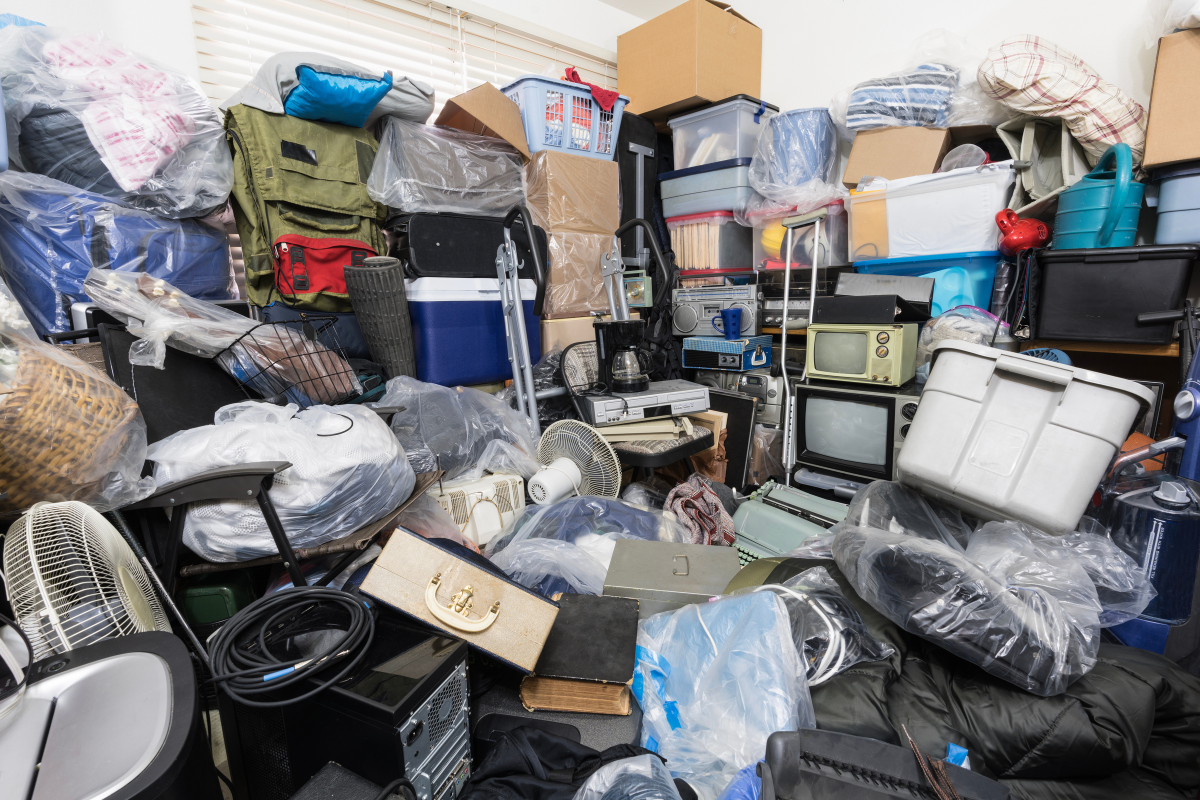Hoarding is a complicated and difficult problem that has a big effect on people and their families.
Hoarding disorder can impact people from a wide range of demographic groupings, however some populations may be more likely to exhibit hoarding tendencies than others. As hoarding can happen to anyone, it takes time, empathy, and understanding to support a friend who is struggling with it. It’s crucial to handle the situation with delicacy and understanding if you suspect hoarding issues in your family or neighborhood.
HOW TO IDENTIFY THE PROBLEM
Identify the problem by first, recognizing the signs.

The main indicators of hoarding disorder are excessive acquisition and an inability to part with items, which results in congested living spaces that make it difficult to go about everyday tasks. Keep an eye out for indicators like excessive clutter, trouble navigating the house, rooms that cannot be used for their intended purposes, and a refusal to let guests into the main area.
Second, gather information. Try to gather facts about the circumstance in private before acting. Consult your extended family or nearby neighbors who may have observed the same problems. Approaching the topic objectively is crucial to avoid making assumptions or passing judgment.
As hoarding can happen to anyone regardless of these features, these criteria are not absolute markers. The following groups, however, have been found to be more likely to experience hoarding problems:
- Age: Hoarding behaviors can start as early as adolescence, but they often become more pronounced in adulthood. Studies suggest that older adults, particularly those over the age of 55, may be more susceptible to hoarding disorder. However, I would like to point out that hoarding can affect individuals of all age groups.
- Gender: Hoarding disorder appears to be more common among males. However, it is crucial to recognize that hoarding affects individuals of all genders.
- Family history: Evidence suggests that hoarding tendencies may run in families, indicating a genetic predisposition to the disorder. Having a family member with hoarding behavior can increase the likelihood of an individual developing hoarding issues themselves.
- Traumatic experiences: Individuals who have experienced trauma or significant life stressors, such as loss of a loved one, divorce, or abuse, may be more susceptible to developing hoarding behaviors as a way of coping with their emotions or feelings of insecurity.
- Mental health conditions: Hoarding disorder is often associated with other mental health conditions, such as obsessive-compulsive disorder (OCD), anxiety disorders, depression, and attention deficit hyperactivity disorder (ADHD). These conditions can contribute to or exacerbate hoarding behaviors.
- Perfectionism: Some individuals with hoarding disorder tend towards perfectionism, which can manifest as difficulty discarding items due to a fear of making the wrong decision or needing to keep everything for future use.
HOW TO ADDRESS THE PROBLEM
Once identified, here are some steps on how to address the problem of hoarding:
- Educate yourself: Learn about hoarding disorder and its underlying causes. Understanding the condition will help you approach your friend with empathy and provide informed assistance. Hoarding is often associated with deep emotional attachments to possessions and can be a manifestation of underlying mental health issues. Approach the individual or family with empathy and understanding, expressing concern for their well-being and living conditions.
- Start a conversation: Choose an appropriate time and place to initiate a conversation about the hoarding issue. Remain calm, non-confrontational, and non-judgmental. Express your observations and concerns, emphasizing its impact on their safety, health, and quality of life. Offer your support and willingness to help. Begin the conversation by expressing your care and concern for their well-being. Use “I” statements to avoid sounding accusatory. For example, say, “I’ve noticed that you’re struggling with clutter, and I’m concerned about how it might affect you.” Let them know you are there to support them and that they can trust you.
- Suggest professional help: Encourage the individual or family to seek professional assistance. Hoarding disorder is best addressed by mental health professionals with experience in cognitive-behavioral therapy (CBT) or specialized hoarding disorder treatments. Share information about local therapists, support groups, or organizations that can provide guidance and resources.
- Offer practical assistance: Hoarding can overwhelm the individual or family involved. Offer assistance in practical tasks such as decluttering, organizing, or finding resources. Respect their autonomy and decisions regarding their possessions, but be supportive in creating a safer and healthier living environment.
- Maintain privacy and confidentiality: Hoarding is a sensitive matter, and respecting the privacy and confidentiality of the individuals involved is essential. Avoid discussing the situation with others unless it’s necessary for their well-being or involves seeking professional help.
- Involve authorities if necessary: In some cases, hoarding can become a serious safety concern, posing fire hazards, structural damage, or health risks. If the situation appears severe and poses an immediate danger, involving local authorities or social services may be necessary. However, consider this a last resort after exploring other options and consulting with professionals.
Keep in mind that hoarding disorder is a complicated problem that may call for expert help. Recommend to your buddy that they consult with mental health experts who can offer them specialized assistance and treatment alternatives.

CONNECT WITH ME!
Book a FREE CONSULTATION HERE.




![Home Prices Forecast To Climb over the Next 5 Years [INFOGRAPHIC]](https://yuntonghomes.com/wp-content/uploads/2024/01/Home-Prices-Forecast-To-Climb-over-the-Next-5-Years-INFOGRAPHIC-1-300x200.jpg)


![Why It’s More Affordable To Buy a Home This Year [INFOGRAPHIC]](https://yuntonghomes.com/wp-content/uploads/2024/01/Why-Its-More-Affordable-To-Buy-a-Home-This-Year-INFOGRAPHIC-300x200.jpg)